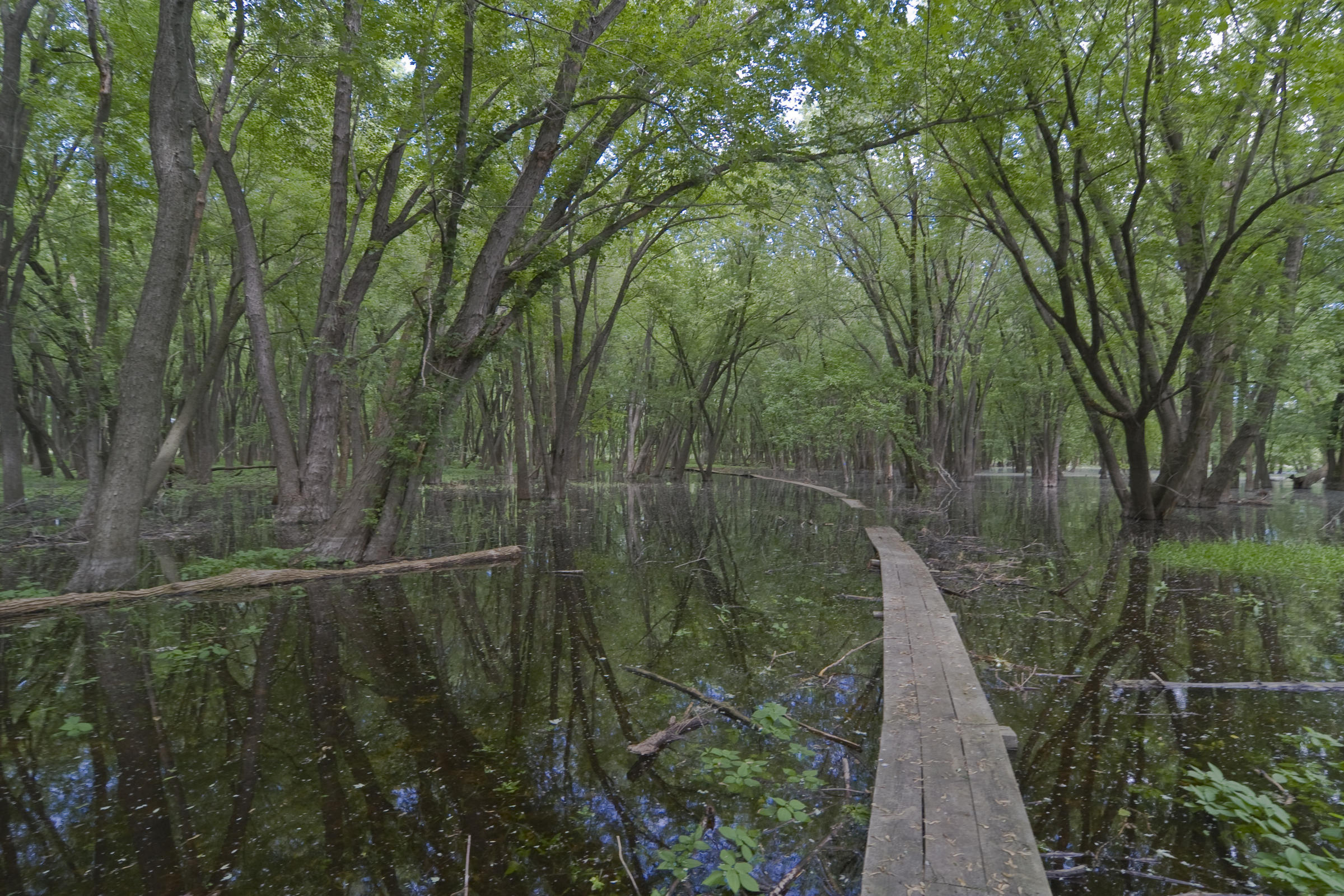Cavity-nesting birds rely on floodplain forests along rivers to thrive
Spring has arrived and Minnesotans are flocking to areas like Frontenac State Park in southeast Minnesota to see budding trees and migrating warblers. Frontenac offers spectacular views of Lake Pepin, the Mississippi River, and the surrounding bluffs and forests.
All along the Upper Mississippi River, including within Frontenac, are floodplain forests – unique and important river ecosystems. Birds, along with a host of other wildlife, benefit from the lush vegetation, dense canopy of woods, interspersed sloughs, and wetlands found within these areas. More than a hundred bird species are found within floodplain forests including cavity-nesting birds like the Prothonotary Warbler, Wood Duck, and Hooded Merganser. Those birds need the dead snags and tree cavities within those forests to breed and nest.
In addition to providing important habitat, floodplains along the Mississippi River help provide flood protection to nearby towns and cities. Floodplain forests also help improve water quality by filtering excess pollutants, sediment, and nutrients from our water before it continues south in the Mississippi River.
Much of today’s floodplain forest is mature silver maple, and in 50-70 years many of these trees are expected to die from natural causes. As these trees disappear, the canopy will open up and provide ideal conditions for the spread of reed canary grass, an invasive plant that prevents natural regeneration of trees. Without action, we can expect a significant loss of floodplain forest along the upper Mississippi Flyway. This loss will put wildlife at great risk, including species in decline like Red-shouldered Hawks and Cerulean Warblers which require large tracts of floodplain forest to survive.
Tim Schlagenhaft, Upper Mississippi River program manager, is dedicated to understanding how we can effectively sustain our floodplain forests long-term and restore those that have already disappeared. During the next 18 months, Schlagenhaft, along with Audubon Forest Ecologist Andy Beebe, will coordinate the restoration of 300 acres along the Mississippi River from Red Wing to the Iowa border.
“These are not easy areas to restore,” says Schlagenhaft, “and it has been a team effort. We’re working with state and federal agencies, universities, local organizations, and many others to discuss, research, and test out the best way to preserve and revive these forests.”
Schlagenhaft says this is the beginning of a long-term effort to combat key reasons for floodplain forest loss. Invasive species, like reed canary grass, and locks and dams that maintain artificially high water levels are two primary causes, but approaches to fixing these issues are challenging and can range wildly in effectiveness.
Over the course of next three years, a team of biologists and graduate students will perform on-the-ground conservation trials to determine the best approach to regenerating trees and controlling reed canary grass. The results from that research will help improve the effectiveness of future restoration.
Funding for this project is provided by the Minnesota Environment and Natural Resources Trust Fund as recommended by the Legislative-Citizen Commission on Minnesota Resources (LCCMR).









